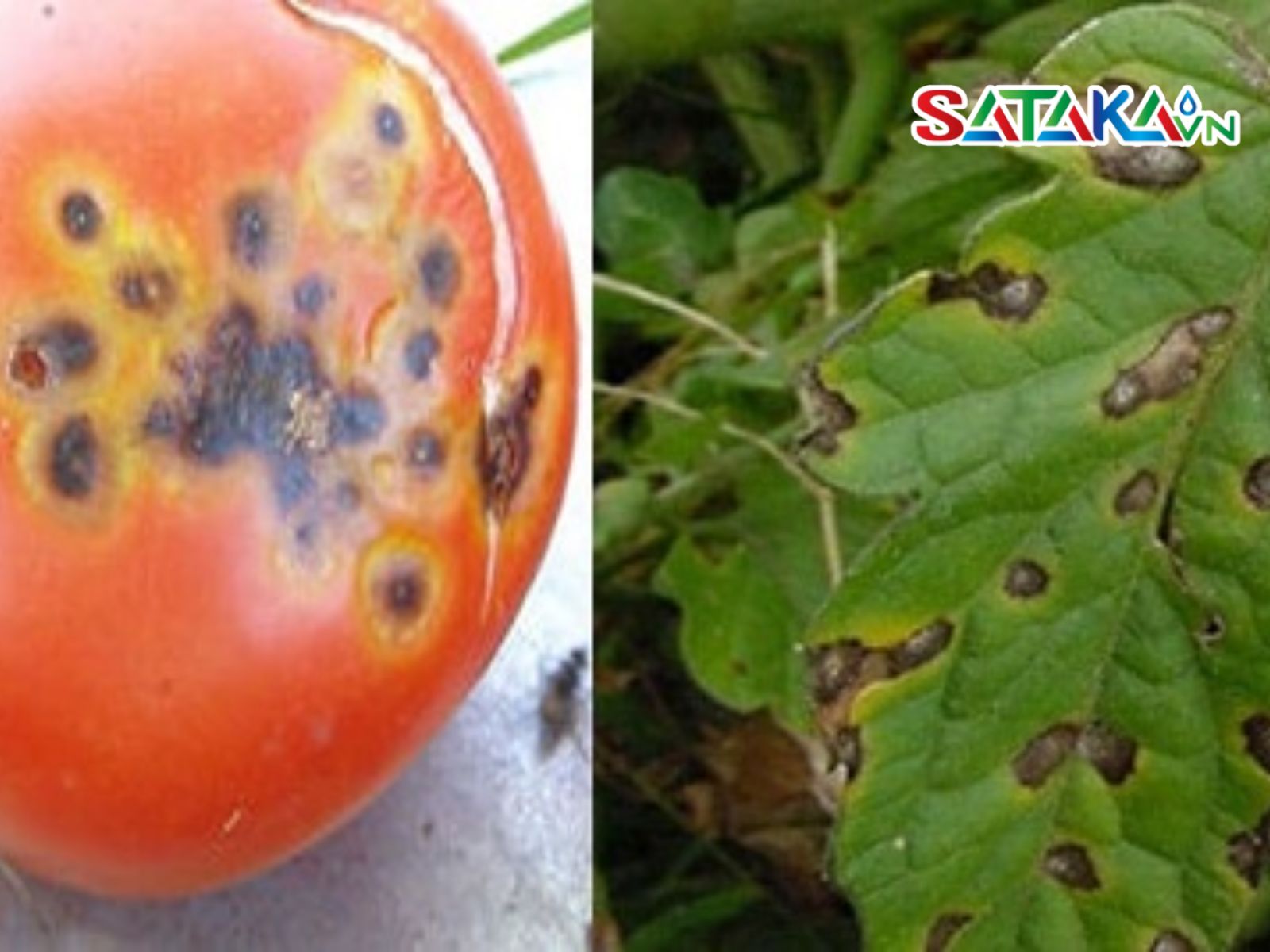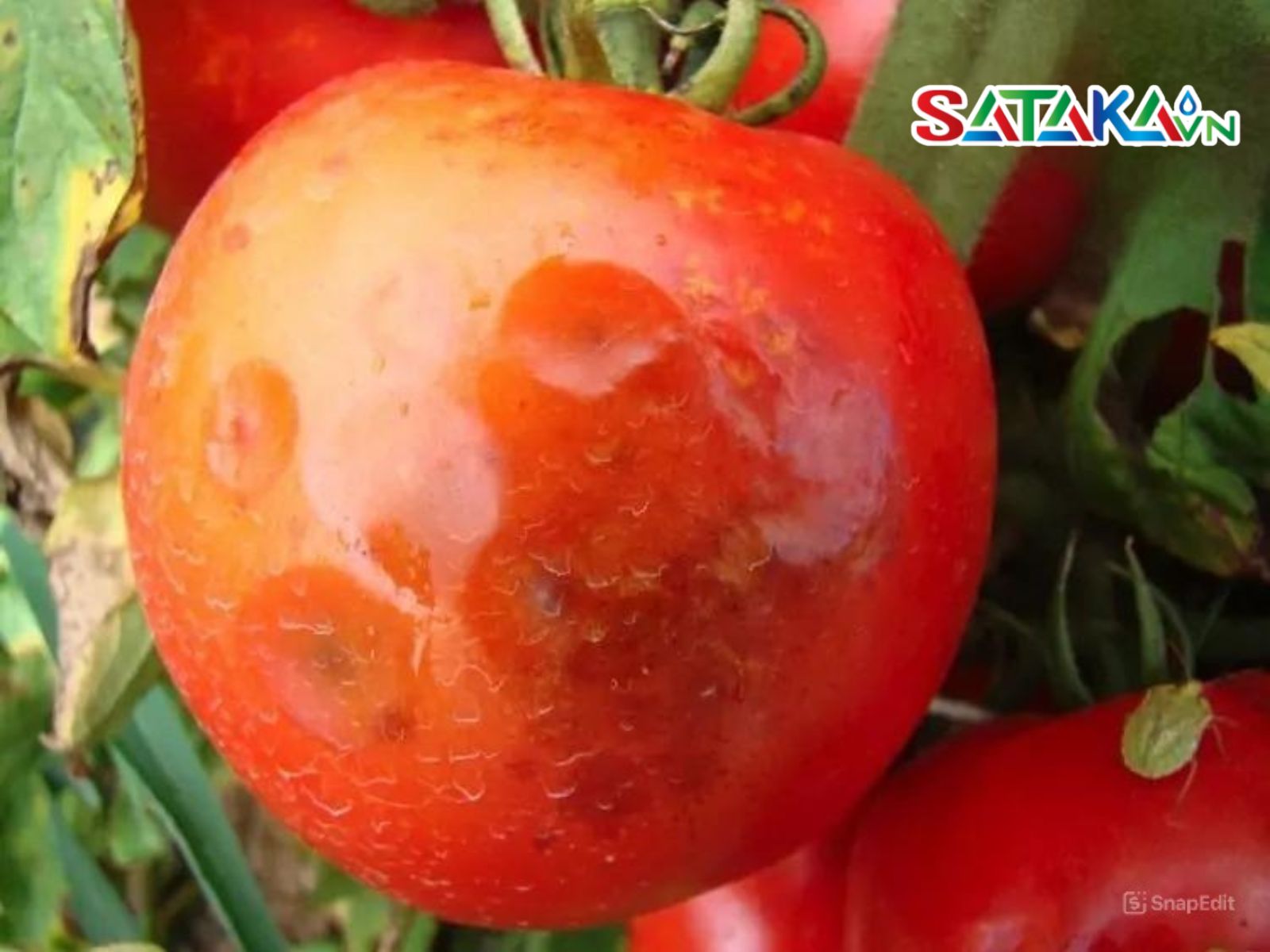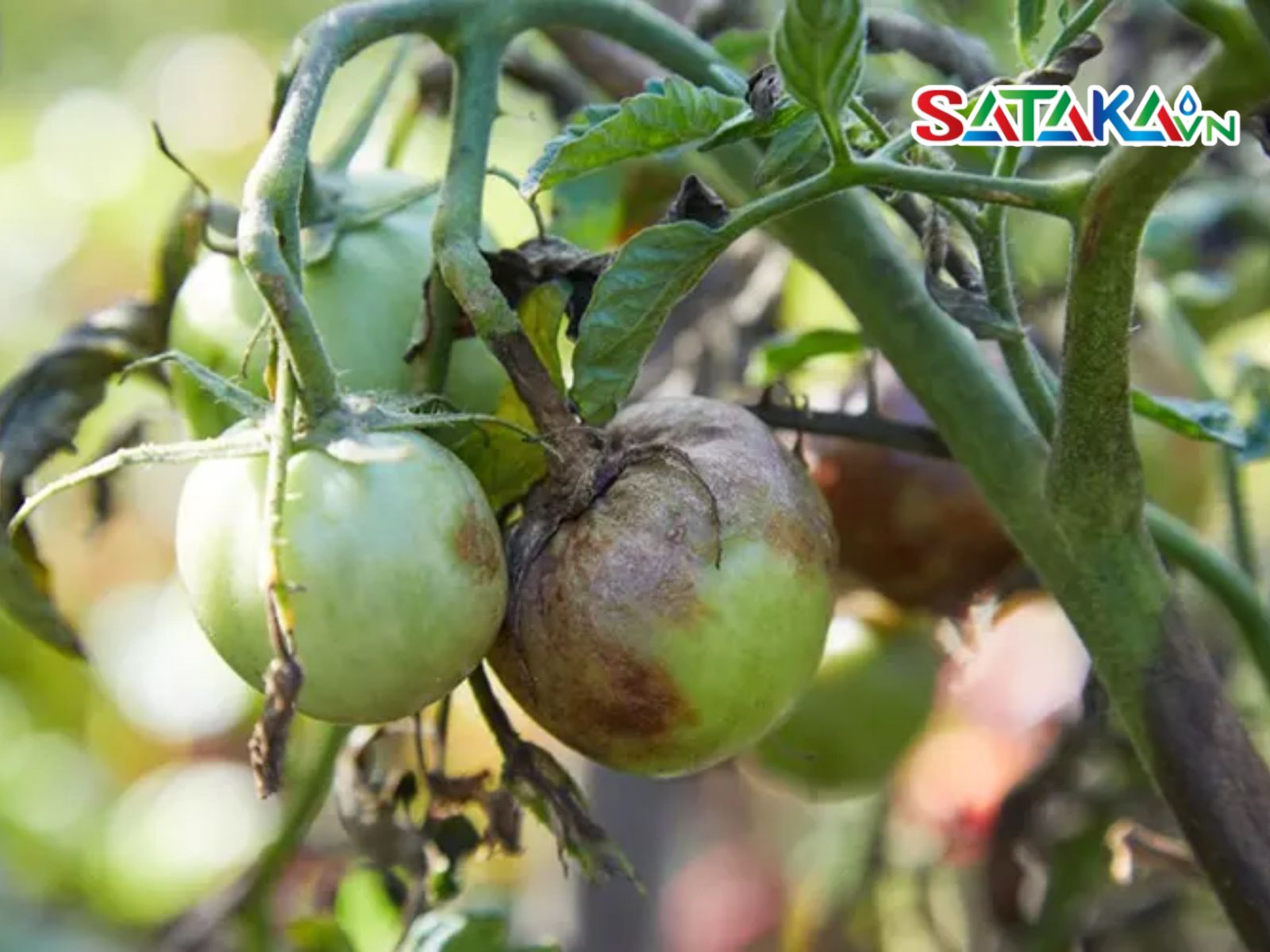Tomato anthracnose causes fruit rot, reduces yield, and makes produce difficult to market. Early detection and proper treatment are key to maintaining a healthy tomato garden.
Tomato anthracnose is consistently one of the top concerns for farmers. It not only causes fruit to rot and drop prematurely but also severely diminishes the quality and yield of the crop. To help farmers proactively prevent and effectively manage this disease, let's explore the information below.
Tomato anthracnose is a common and dangerous disease that severely impacts the yield and quality of agricultural produce. The primary causal agents are fungi belonging to the genus Colletotrichum, most notably C. phomoides, C. gloeosporioides, C. dematium, and C. coccodes. These fungi typically spread rapidly in humid environmental conditions and at temperatures ranging from 25–30°C — being especially prevalent during the rainy season or in gardens with poor drainage systems.
It's important to note that tomato anthracnose is not limited to a specific area within the garden; it can spread widely through irrigation water, rainwater, wind, or gardening tools if not thoroughly cleaned. Even improper plant care can inadvertently contribute to the dissemination of disease spores.
Fungal spores are typically cylindrical or slightly curved and colorless, with the ability to adhere to and penetrate plant tissue very quickly. Once favorable conditions are met, they will attack various parts of the tomato plant, such as leaves, stems, flowers, and fruits, weakening the plant and easily leading to complete crop loss if not detected early.

Causes of Tomato Anthracnose
Tomato anthracnose typically causes the most significant damage when tomatoes are nearing harvest and fruits begin to ripen—this is when the plants are most vulnerable.

Symptoms of Tomato Anthracnose
Beyond directly damaging the plants, tomato anthracnose brings about several serious consequences, affecting farmers' yield, quality, and income.
Here are effective and practical ways to help farmers proactively protect their tomato gardens from the severe damage caused by fungal diseases.
Prevention is better than cure—this is a crucial principle when dealing with tomato anthracnose. Here are steps farmers should take right from the start of the season:

Management Measures for Tomato Anthracnose
If the disease starts to appear or there's a risk of a widespread outbreak, farmers can consider using appropriate plant protection products. Some recommended active ingredients for controlling tomato anthracnose include:
When using these products, farmers must strictly follow the manufacturer's recommended dosage, pre-harvest interval, and instructions. Additionally, it's advisable to rotate active ingredients to prevent the fungus from developing resistance. Farmers should also remember to wear full protective gear when spraying, ensuring their personal safety and protecting the surrounding environment.
We hope that the information shared has provided farmers with a clearer understanding of tomato anthracnose and equipped them with useful solutions to keep their crops healthy and achieve high yields. If you need further consultation or wish to select suitable specific treatment products, don't hesitate to contact Sataka!
SATAKA VIETNAM JOINT STOCK COMPANY
Address: No. 246 Nguyen Kim Cuong, Tan Thanh Dong Commune, Cu Chi District, Ho Chi Minh City
Hotline: 0856.555.585 or 0789.917.927
Website: https://sataka.com.vn/